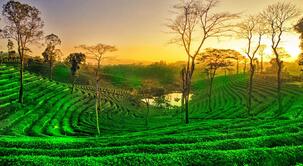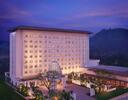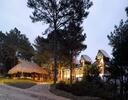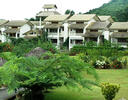Best of Seven-Sister States ... The Unexplored India !

Sometimes the Seven Sisters of the Northeast (the states of Arunachal Pradesh, Assam, Manipur, Meghalaya, Mizoram, Nagaland and Tripura) hardly seem like India at all. The region's hundreds of tribes and sub-tribes are slowly embracing modernity, but remain extremely diverse.
Nagaland's former head-hunters now go to church on Sundays. Many Arunachalis also attend church-like buildings on Sundays – to worship the sun and moon. Cloudy Himalayan valleys near the border of Tibet are dotted with colourful monasteries, echoing with Buddhist chants and clashing cymbals.
The geography is as varied as the culture. While waterfalls thunder down Cherrapunjee's jungle escarpments, blizzards may be blocking the passes to Tawang, and one-horned rhinos go on grazing peacefully in Kaziranga's grasslands beside the mighty Brahmaputra.
Northeast travel can be tough, with atrocious roads and long distances. But the destinations are always worth the effort and there'll be a warm welcome that awaits. You are indeed far from the beaten track: only the adventurous need apply.
Itinerary
- Day 1
Arrival Guwahati / Local sightseeing & Cruise on Brahmaputra River
Upon arrival at Guwahati airport, you will be met by our tour escort at the airport’s exit gate with a placard in your name. You will be escorted to your awaiting vehicle and transferred to hotel
Guwahati
The gateway to the North East, and the largest and most cosmopolitan city in the region, Guwahati serves as the starting point for many itineraries. Extending along the south bank of the mighty Brahmaputra, it’s in large part a somewhat featureless expanse of concrete, glass and traffic. But if you explore the older areas near the river, you'll start to feel the character and local flavour that lingers amid the ponds, palm trees, temples, single-storey traditional houses and colonial-era mansions. Only a few stretches of the riverbank are accessible in the central areas – but when you reach them, those Brahmaputra views never disappoint!
Upon arrival check in at hotel
Later depart for Kamakhya Temple visit assisted by our guide
Kamakhya Temple
The Kamakhya Devalaya has been regarded as the greatest centre of Shakti worship in Assam from very ancient time. The History of Kamakhya Devalaya is inter-mixed with oral history and legends, sometimes these soutrces reflect different periods of time. Mention of Kamakhya has been made in various ancient literatures e.g. Devi Bhagawat, Devi Purana, Kalika Purana etc.
The holy shrine of Maa Kamakhya is bestowed with its own set of myths and mysteries. The aesthetic significance of this temple cannot be ascertained only by its factual history; rather one needs to dwell upon the oral recorded history & historical legend. The earliest story dates back to creation itself.
Later depart for the sunset cruise by country made motor boat on River Brahmaputra
Sunset cruise on River Brahmaputra
Enjoy a magnificent evening over the majestic Brahmaputra River, and return to Guwahati city with a taste of a quaint evening and a breath of fresh air, with this relaxing and unforgettable Sundown cruise experience.
Sit back, relax, and enjoy a drink - and some nibbles - as you sail through the Guwahati riverside. Watch the dark mix with remaining of sunset over the stunning landscape and then the twinkling of stars in the evening sky. The cruise will sail on the mighty Brahmaputra around Guwahati, so all you need to do is sit back, relax, and admire the view.
Transfer back to hotel
Overnight at Guwahati - Day 2
Guwahati to Shillong / Local sightseeing
After early breakfast depart for Shillong [100 Kms – 3 hrs drive]
Enroute visit the Don Bosco Museum
The Don Bosco Museum
A three-in-one Institution combining a museum with a research and publication centre, for promoting and preserving the rich cultural heritage of North East India -a unique fusion of all the sister states under one roof.
Even in terms of design the DBCIC is startling: built in hexagonal shape, its seven floors represent the seven states of North East India. The building rises to form a flame, expressing the reality that if cultures are understood well, they can form a communion of cultures for a better society.
DBCIC contains seventeen galleries displaying cultural artefacts and paintings. It offers study and research facilities throughout its specialised library of 10,000 volumes, a media hall and a conference hall. It is frequented by school students and older research students and anthropologists, since this area of India is an anthropologist's paradise.
Later drive to Shillong
Shillong
Irreverent Shillong was the capital of colonial and post-Independence Assam (which embraced almost the whole Northeast) until 1972, when it became capital of the newly carved-out state of Meghalaya. Since then it has developed some accoutrements of a typical modern Indian town, including urban sprawl, a lot of concrete, and snarled-up traffic along its winding streets, but it retains some old-time charm in certain pockets – and a strong sense of individuality and difference, with its many Christian churches and its residents' tastes for hanging out in cafes, playing and watching rock music and football, driving around in spruced-up automobiles and gambling on archery.
Upon arrival check in at hotel
Later local sightseeing of Shillong
Places of Sightseeing at Shillong
Cathedral
Cathedral Catholic Church Shillong is positioned between Dhankheti and Laitumkhrah. This church is erected on the same site where the first church of Shillong was built. The first construction was destroyed in fire in the year 1936. This lovely church in Gothic architectural style lies amidst expansive lush lawns. This church falls under Roman Catholic Archdiocese of Shillong that is known to be administering similar sort of places of worship in Jaintia and Khasi hills of Meghalaya. The Cathedral is named after Mary, the mother of Jesus Christ.
Archery ground
This is the venue for a archery event whose outcome is the subject of a highly popular betting game in Shillong, known as Thoh Tim or Teer or Siat Khnam. At tiny betting stalls all over the city, people wager on how many of the archers' arrows will stick in the target. Visitors are welcome to watch the fascinating spectacle
Police Bazaar Shillong
Police Bazar, is a well-known market situated in the heart of Shillong. It is one of the most important shopping centers for the residents of not only Shillong but for various parts of Meghalaya and all the tourists who visit Meghalaya. There are a few small shopping malls, while some buildings around the Police Bazar circle are under repairs. Shopping can be done from shops, or from the roadside vendors. This place is overflowing with people all through the day, and is easily reachable from all parts of Shillong by taxis, buses, and supplementary transport service (small vans).
Umiam Lake
One of the popular tourist spots in Shillong, Umiam Lake is a vast and scenic reservoir that attracts a large number of tourists from across the country. Also known as “Bara Pani†or the Big Water, The Lake is a part of a dam, constructed as a first Hydel Power Project in this North-East Indian State. The cumulative catchment area including both the Dam and the lake is over 220 sq.km.
Intended initially as a reservoir for a Dam, the Lake quickly became one of the most popular tourists’ spots in Shillong, becoming a prominent venue for kayaking, water cycling, boating and scooting. Tourists can also enjoy riding row boats, paddle boats, sailing boats, cruise boats and speed boats as well. Due to its picturesque, panoramic setting, surrounded by the lush and lofty East Khasi Hills, Umiam Lake is often compared with the beautiful and mesmerizing Lakes of Scotland.
Overnight at Shillong - Day 3
Shillong / Day trip to visit Dawki, Mawlynnong, Cherrapunjee
After early breakfast depart for day trip to Dawki, Mawlynnong & Cherapunjee
Dawki : Dawki is known for its pristine lush green surroundings, and it is truly a blessing in disguise! The town is not just a tourist attraction but also one of the nearest 'Gateways to Bangladesh'. It has served as a trade centre between the two countries for a long time.
The sheer vistas that accompanied you from Guwahati to Shillong and the serpentine roads that will take you all the way to Dawki will be no less than the enchanted ones that might have taken many adventurers or dreamers on their exciting journeys. The sunrays filtering through tall palms and betel nut trees on one side and rocky hills on the other en route to this little paradise of nature could have anyone feeling calm in head and soul. You will feel no different. And, the regular occurrence of photo-perfect spots will keep you excited all along
The little streams of milky white water flowing down the dark rocks, right beside the old iron bridge, to the green plains of Bangladesh will be just a precursor to what lays ahead. The jewelled emerald waters of Umngot river, popularly called Dawki river owing to its location, will look as if belonging to another world.
Later proceed to Mawlynnong Village
Mawlynnong Village : Mawlynnong Village located in the East Khasi Hills of Meghalaya, also referred as ‘God’s own garden’ has won the acclaim of being the cleanest village in Asia in 2003. The village known for its cleanliness is located around 90 kms from Shillong and is a community based eco-tourism initiative. The community has made collective effort to maintain the ambience of a clean village. The village offers picturesque natural beauty, a trek to the living root bridge at a neighbouring village Riwai.
The adage "Neighbours envy, owners pride' is apt for Mawlynnong as it has earned the distinction of being one of the cleanest villages in Asia, a fact that every Mawlynnong villager is proud of and other villagers are envy of.
Living Root Bridge : Deep in the dense tropical forest of Meghalaya, and shrouded in cloud and rain for much of the year, are some astonishing man-made natural wonders. Known as living root bridges, inventive members of the Khasi tribe have trained them to grow from the roots of ancient rubber trees, native to the northeast region. The root bridges provide a stable alternative to wooden bridges, which decay and get destroyed during the lengthy monsoon seasons.
Later proceed for Cherapunjee
Cherrapunjee
The undulating Meghalaya uplands give way abruptly on the state's southern fringe to deep, jungle-clothed, waterfall-ribboned valleys plunging precipitously to the plains of Bangladesh. Cherrapunjee (also called Sohra), sitting near the lip of the escarpments, is the obvious base for exploring this spectacular landscape. Thanks to the prodigious monsoon rainfall produced by this geography, Cherrapunjee was once feted as the wettest place on Earth, though nearby Mawsynram is nowadays reckoned to be a few drops damper. Domestic tourists flock here during the monsoon for the cool air, the celebrated rain and the waterfalls, meaning that Cherrapunjee's peak season runs from about May to August.
Places of Sightseeing at Cherrapunjee
Places to covered as per availability of time
Mawsmai Caves : The Mawsmai Caves are a major crowd puller that leaves tourists spellbound. These limestone caves have the distinction of being the only caves in Meghalaya that are lit enough to enable tourists to enjoy the natural formations in awe. Though the caves are long, only a distance of 150 meters is open for tourists, while the other section is closed. The stalactites and stalagmites caves have innumerable forms, shapes and sizes inside leaving one to imagine as many life forms as possible. This magnificent natural wonder is the handiwork of years of natural abrasion and underground water.
Arwah Cave : Arwah Cave is a huge cave located at Khliehshnong area of Cherrapunji in Meghalaya. Known for its limestone formations and the fossils, it is one of the popular caves in Meghalaya and among the spectacular tourist places in Cherrapunji. Surrounded by the thick forest of Law Shynna in Meghalaya, Arwah Cave is an absolute treat for adventure and archaeology junkies. The cave itself is significantly larger than Mawsmai but only a small part of the cave has been opened for tourists. It is about 300 meters which takes 20 minutes to explore.
The Nohsngithiang Falls also known as Seven Sisters Falls : Plunging down a height of 1,035 ft, the Nohsngithiang Falls is the fourth highest waterfall in India. This Falls is located a few kilometers from Cherrapunjee and is one of the major tourist attraction. This waterfall is also known as Seven Sister Falls or Mawsmai Falls, the latter being the name of a village The Seven Sister Falls derives its name from the seven streams that flow down the plateau like feature. This is a must see attraction during the monsoons, when the streams are inundated with water and flow down rapidly forming a perennial rainbow much to the delight of tourists.
Nohkalikai Falls : Nohkalikai Waterfalls is around 5 km from Cherrapunjee and is the fourth highest waterfall in the world. Falling from a height of 1,100 ft, this fall is a great attraction of Cherrapunjee. The drive to Nohkalikai Falls is through the elevated tableland that leads to the cliff and then hike a short distance to a viewpoint from where you can witness the enchanting sight of the beautiful Nohkalikai waterfall plunging down into an ultramarine pool many hundred feet below.
Living Root Bridges : Deep in the dense tropical forest of Meghalaya, and shrouded in cloud and rain for much of the year, are some astonishing man-made natural wonders. Known as living root bridges, inventive members of the Khasi tribe have trained them to grow from the roots of ancient rubber trees, native to the northeast region. The root bridges provide a stable alternative to wooden bridges, which decay and get destroyed during the lengthy monsoon seasons. It takes around 15 years for a new root bridge to become strong enough to bear the weight of people crossing it. However, it will continue to grow and strengthen even more over time. Some of the bridges are believed to be hundreds of years old, although no one knows their exact age.
Thangkarang Park : Thangkharang Park, situated at a distance of 12 km from Cherrapunji is a must see spot. It is located just besides the Khoh Ramhah rock and offers a 180 degree view of the Bangladesh plains below. This view point also presents a nice view of the Kynrem Falls, which cascades in three levels at a distance. This park has two nice viewpoints strategically built on two of the three rocks that imparts a good view of Khoh Ramhah or the pillar rocks and the valley below. A small bridge helps one cross over to the other section of the park in times of heavy rains or the monsoons, when the stream below overflows with water.
Koh Ramhah : Khoh Ramhah, also known as Pillar Rock or Mothorp is another major tourist attraction of Sohra. Legend has it that Khoh Ramhah is a fossilised cone shaped basket of an evil spirit. However, the beauty of the place is enhanced by the flow of the stream through the rocks, which takes the shape of a rapid waterfall when seen from behind. On a clear day, the Bangladesh plains yonder are a sight to behold. The clouds ascending from the plains and passing through the rocks add beauty and aura to the place. There is a view point just near the rock which gives one a nice view of the rock.
Later drive back to Shillong
Stop by at Elephant Falls while going or returning
Overnight at Shillong - Day 4
Shillong to Kaziranga National Park
After breakfast transfer from Shillong to Kaziranga National Park [230 Kms – 6 to 7 hrs drive]
Enroute take a break at Jiva Restaurant, Nongpoh
Kaziranga National Park
Kaziranga National park's 430 square kilometer area sprinkled with elephant-grass meadows, swampy lagoons, and dense forests is home to more than 2200 Indian one-horned rhinoceros, approximately 2/3rd of their total world population. Formed in 1908 on the recommendation of Mary Curzon, the park is located in the edge of the Eastern Himalayan biodiversity hotspots - Golaghat and Nagaon district. In the year 1985, the park was declared as a World Heritage Site by UNESCO.
Along with the iconic Greater one-horned rhinoceros, the park is the breeding ground of elephants, wild water buffalo, and swamp deer. Over the time, the tiger population has also increased in Kaziranga, and that's the reason why Kaziranga was declared as Tiger Reserve in 2006. Also, the park is recognized as an Important Bird Area by BirdLife International for the conservation of avifaunal species. Birds like lesser white-fronted goose, ferruginous duck, Baer's pochard duck and lesser adjutant, greater adjutant, black-necked stork, and Asian Openbill stork specially migrate from the Central Asia during the winter season.
Upon arrival check in at the resort
Rest of the day at leisure
Overnight at Kaziranga - Day 5
Kaziranga National Park / Jungle Safaris
Early morning depart to explore the park by elephant safari
Elephant Safari
Elephant safari is the best way to explore the wide varieties of wildlife in the Kaziranga National Park, area covered by the Elephant Grass can be best viewed trip through elephant's back, Elephant safari is best enjoyed in the early Morning, during safari one can get opportunity to see herds of Indian Elephants, One-horned Rhinoceros very short distance, a close encounter with the animals in Kaziranga National Park makes the trip memorable
Return to the resort for breakfast
Mid-morning, venture into the central range of the park by a Jeep safari
Jeep Safari
Jeep safaris are accompanied by a guide/escort and last for 3-4 hours in the morning and 3-4 hours in the afternoon, The main attraction of it is one horned rhinoceros with wild buffalo, Elephant, tiger a variety of deer, Bear, Python, and prehistoric looking monitor lizard. The Kaziranga wildlife is also adorned with the crested serpent eagle, Pella's fishing eagle and Grey headed fishing Eagle with a number of other Bird species like the Jungle fowl, Bengal florican and water fowl, goose, a large number of pelicans, Black naked stork, Snake Bird and so on.
Apart from the rhino, other animals that you may encounter in the safari are hog deer, swamp deer, wild water buffalos, elephants - and if you are lucky, even tiger
Kaziranga is also home to pelicans, storks and darters - as there are numerous water bodies to be encountered inside the Park. With a variety of migratory and resident birds darting from tree to tree, the safari in Kaziranga will offer you an opportunity to observe these avian varieties – along with their mammalian counterparts - very closely
Later drive back to the resort for rest
Later in the afternoon visit western range of the park by a Jeep safari
Overnight at Kaziranga - Day 6
Kaziranga National Park to Kohima / Enroute visit Jakhama village
After early morning breakfast, depart for Kohima [265 Kms – 9 hrs drive]
Enroute visit Jakhama village
Jakhama Village
Jakhama is a small town adorning the hills of Nagaland in the north-eastern part of India. It is the perfect recluse from the conventional reaches of wanderlust and makes for an interesting odyssey.
Jakhama village which is a host to the much celebrated Hornbill festival is decorated with the traditional Naga huts called morung (morung is a bamboo hut having a gable roof with wooden planks at the front peak carved with special symbols like that of the hornbill). People of the village live in small wooden houses whereas the morung is used for community services. Life seemed to be simple, peaceful and happy there.
Later transfer for Kohima
Kohima
This picturesque town is the home of the brave and daring, yet simple and innocent, Naga tribes. Lapped in the eastern frontiers of the Himalayan mountain range, Kohima is marked by an unhurried pace of life, calm and serene environs and fresh, unpolluted air, which make a welcome change for a jaded city dweller. A typical Naga town, it depicts the exotic tribal culture of the northeast and offers a panoramic view of the neighboring hills.
Kohima was founded alongside the large Angami village known as Kohima Village. It has earned its name in history as the place where the Japanese tide during World War II was halted.
Upon arrival check in at Hotel
Later, visit local market of Kohima
Overnight at Kohima - Day 7
Kohima / Sightseeing
After breakfast today we drive to Khonoma village via Kohima
Khonoma Village
A place renowned for its valour and courage. The Khonoma gate tells the story of British infiltration into Naga hills.
Khonoma village is located about 20 km from the state capital, Kohima. The village, referred to as Khwunoria (named after the Angami term for a local plant, Glouthera fragrantisima), is estimated to be around 700 years old and is spread over an area of 123sq.km.
Khonoma is famous for its forests and a unique form of agriculture, including some of the oldest terraced cultivation in the region. The terrain of the village is hilly, ranging from gentle slopes to steep and rugged hillsides. The hills are covered with lush forestland, rich in various species of flora and fauna. The state bird, Blyth’s tragopan, a pheasant now nationally endangered, is reprtedly found here.
Later in the afternoon visit the famous war cemetery, a symbolic memorial raised as citation for the supreme sacrifice made by the officers and men of the Allied forces during World War II.
War Cemetery
The War Cemetery in Kohima was built in the year April 1944 to mark the death of the soldiers who lost their lives in the Second World War at Kohima. In the memory of those soldiers of the allied force of 2nd British Division this war cemetery was built. In the tennis court area of deputy commissioners’ residence these soldiers breathed their last on the Garrison hill battleground.
This spot is a great tourist attraction as it tells people more about our ancient history. To prevent the Burma attack, the Japanese army attacked the British army who were then stationed at North East India in March 1944. Later in April, the Japanese army after occupying the Garrison hill attacked the commonwealth forces.
Kisama
Situated about 10 kilometers from Kohima, the Naga Heritage Village offers a panorama of natures, cheerful and hospitality of people. The objective of the Heritage Village is to protect and preserve all ethnic cultural heritages by establishing a common management approach and comprehensive data base for perpetuation and maintenance for promotion of tourism. It also aims to uphold and sustain the distinct identity of dialects, customs and traditions of all the ehtnic tribes of Nagland.
During the festivities of Hornbill Festival, the Heritage Village serves as a healthy sign, vision and encouragement for uniting the various tribes of Nagaland to showcase their rich cultural heritage and tradition under the aegis of "Hornbill Festival" in one platform where one could have a glimpse and experience into the Heritage Village, Kisama.
Drive back to Kohima
Overnight at Kohima - Day 8
Kohima to Dimapur for Onward Flight
After breakfast depart for Dimapur [70 Kms – 3 hrs drive] to take the onward flight
Notes
Round the year destination ... Extension recommended to Orissa & West Bengal
Hotels
Tour Inclusions [Best of Seven Sisters]
7 nights accommodation
8 Days transportation by AC Vehicle
All transfers & sightseeing as per the itinerary [coverage as per available time]
Meet & greet upon arrival
English speaking tour guide during sightseeing
Daily buffet breakfast at hotels
Entry fee (Kamakhya Temple VIP entry fee included)
Sun set cruise at Guwahati, Alfresco grand
3 Safaris Kaziranga National Park
Mineral water bottle 2 bottle per day per person
Inner Line Permit for Nagaland
Notes on itinerary
All our itineraries are "Just for Ideas" ... We will get to know you and customise an itinerary just for you that matches your requirements ... dates of travel, category of hotels, preferred airline, flexibility in choosing sightseeing, mode of travel between cities, etc.
Many of our clients have us design more relaxing, slower paced holidays with more in-depth experiences whereas some simply want to visit various destinations and cover only the highlights.
Together, we will determine the ideal route, pace of travel, accommodations, levels of pampering, style of touring, sightseeing to be included, dining preferences, adventure levels, options to meet locals, dates of travel & much more ! and based on this arrive at a price.
Do feel free to get in touch with us by a quick call on +91 79 29602961 or a short mail on mail@destinations4india.com ... Looking forward


















